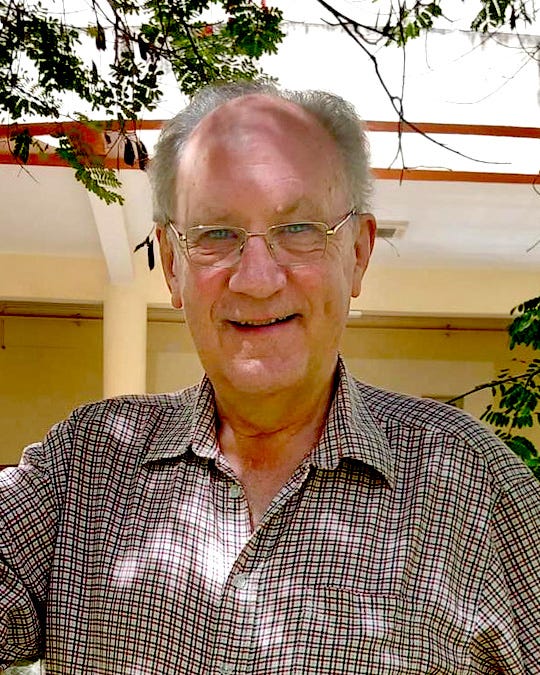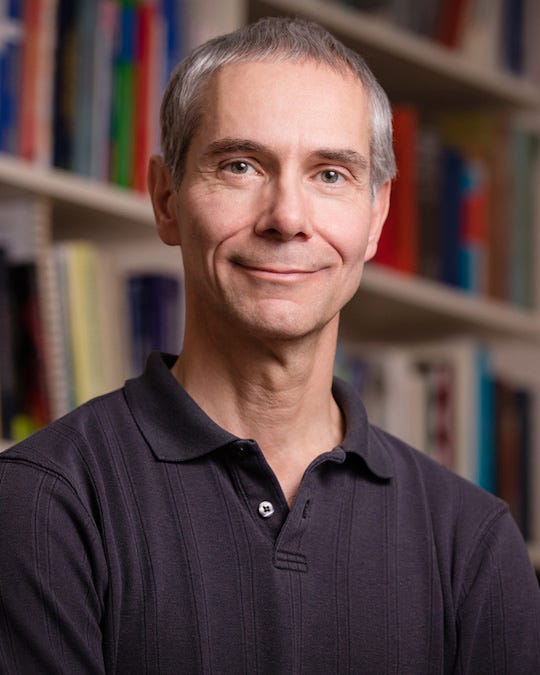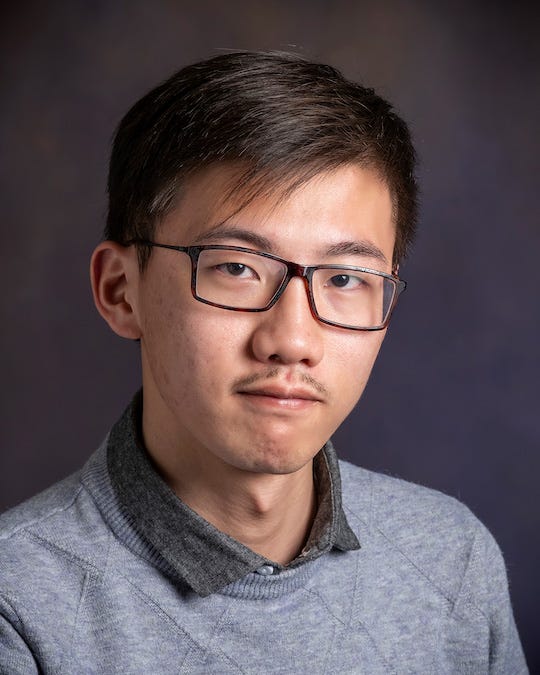Insider Brief:
- A new mathematical theory developed by scientists at Rice University and Oxford University could help — and may provide insight into improving a variety of computing, electrochemical and biological systems.
- The study was published this week in the Proceedings of the National Academy of Sciences from a theory developed by Rice theorist Peter Wolynes and Oxford theoretical chemist David Logan and gives a simple prediction for the threshold at which large quantum systems switch from orderly motion like a clock to random, erratic motion like asteroids moving around in the early solar system.
- Using a computational analysis of a photosynthesis model, collaborators at the University of Illinois Urbana-Champaign showed that the theory can predict the nature of the motions in a chlorophyll molecule when it absorbs energy from sunlight.
- The theory applies to any sufficiently complex quantum system and may give insights into building better quantum computers.
UNIVERSITY RESEARCH NEWS — Houston, Texas/February 23, 2023 — It’s not easy to make sense of quantum-scale motion, but a new mathematical theory developed by scientists at Rice University and Oxford University could help — and may provide insight into improving a variety of computing, electrochemical and biological systems.
The theory developed by Rice theorist Peter Wolynes and Oxford theoretical chemist David Logan gives a simple prediction for the threshold at which large quantum systems switch from orderly motion like a clock to random, erratic motion like asteroids moving around in the early solar system. Using a computational analysis of a photosynthesis model, collaborators at the University of Illinois Urbana-Champaign showed that the theory can predict the nature of the motions in a chlorophyll molecule when it absorbs energy from sunlight.
 Peter Wolynes is Rice’s Bullard-Welch Foundation Professor of Science and a professor of chemistry, of biochemistry and cell biology, of physics and astronomy and of materials science and nanoengineering and co-director of the Center for Theoretical Biological Physics at Rice. (Photo by Gustavo Raskosky/Rice University)
Peter Wolynes is Rice’s Bullard-Welch Foundation Professor of Science and a professor of chemistry, of biochemistry and cell biology, of physics and astronomy and of materials science and nanoengineering and co-director of the Center for Theoretical Biological Physics at Rice. (Photo by Gustavo Raskosky/Rice University)
The theory applies to any sufficiently complex quantum system and may give insights into building better quantum computers. It could also, for instance, help design features of next-generation solar cells or perhaps make batteries last longer.

The study is published this week in the Proceedings of the National Academy of Sciences.
Nothing is ever completely still on the molecular level, especially when quantum physics plays a role. A water droplet gleaming on a leaf may look motionless, but inside, over a sextillion molecules are vibrating nonstop. Hydrogen and oxygen atoms and the subatomic particles within them — the nuclei and electrons — constantly move and interact.
“In thinking about the motions of individual molecules at quantum scale, there is often this comparison to the way we think of the solar system,” Wolynes said. “You learn that there are eight planets in our solar system, each one with a well-defined orbit. But in fact, the orbits interact with each other. Nevertheless, the orbits are very predictable. You can go to a planetarium, and they’ll show you what the sky looked like 2,000 years ago. A lot of the motions of the atoms in molecules are exactly that regular or clocklike.”
 David Logan is the Coulson Professor of Theoretical Chemistry at the University of Oxford. (Photo courtesy of David Logan)
David Logan is the Coulson Professor of Theoretical Chemistry at the University of Oxford. (Photo courtesy of David Logan)
When Wolynes and Logan first posed the question of predicting the regularity or randomness of quantum motion, they tested their math against observations of vibrational motions in individual molecules.
“You only have to know two things about a molecule to be able to analyze its quantum motion patterns,” Wolynes said. “First, you need to know the vibrational frequencies of its particles, that’s to say the frequencies at which the vibrations occur which are like the orbits, and, second, how these vibrations nonlinearly interact with each other. These anharmonic interactions depend mostly on the mass of atoms. For organic molecules, you can predict how strongly those vibrational orbits would interact with one other.”
Things are more complicated when the molecules also dramatically change structure, for instance as a result of a chemical reaction.
“As soon as we start looking at molecules that chemically react or rearrange their structure, we know that there’s at least some element of unpredictability or randomness in the process because, even in classical terms, the reaction either happens, or it doesn’t happen,” Wolynes said. “When we try to understand how chemical changes occur, there’s this question: Is the overall motion more clocklike or is it more irregular?”
Aside from their nonstop vibrations, which happen without light, electrons can have quantum-level interactions that sometimes lead to a more dramatic turn.
 Martin Gruebele is the James R. Eiszner Endowed Chair in Chemistry at the University of Illinois Urbana-Champaign. (Photo by Fred Zwicky/University of Illinois Urbana-Champaign)
Martin Gruebele is the James R. Eiszner Endowed Chair in Chemistry at the University of Illinois Urbana-Champaign. (Photo by Fred Zwicky/University of Illinois Urbana-Champaign)
“Because they’re very light, electrons normally move thousands of times faster than the centers of the atoms, the nuclei,” he said. “So though they are constantly moving, the electrons’ orbits smoothly adjust to what the nuclei do. But every now and again, the nuclei come to a place where the electronic energies will almost be equal whether the excitation is on one molecule or on the other. That’s what’s called a surface crossing. At that point, the excitation has a chance to jump from one electronic level to another.”
Predicting at which point the transfer of energy that takes place during photosynthesis turns from orderly motion to randomness or dissipation would take a significant amount of time and effort by direct computation.
“It is very nice that we have a very simple formula that determines when this happens,” said Martin Gruebele, a chemist at the University of Illinois Urbana-Champaign and co-author on the study who is a part of the joint Rice-Illinois Center for Adapting Flaws into Features (CAFF) funded by the National Science Foundation. “That’s something we just didn’t have before and figuring it out required very lengthy calculations.”
The Logan-Wolynes theory opens up a wide array of scientific inquiry ranging from the theoretical exploration of the fundamentals of quantum mechanics to practical applications.
“The Logan-Wolynes theory did pretty well in terms of telling you at roughly what energy input you’d get a change in quantum-system behavior,” Wolynes said. “But one of the interesting things that the large-scale computations of (co-author Chenghao) Zhang and Gruebele found is that there are these exceptions that stand out from all the possible orbiting patterns you might have. Occasionally there’s a few stragglers where simple motions persist for long times and don’t seem to get randomized. One of the questions we’re going to pursue in the future is how much that persistent regularity is actually influencing processes like photosynthesis.
“Another direction that is being pursued at Rice where this theory can help is the problem of making a quantum computer that behaves as much as possible in a clocklike way,” he said. “You don’t want your computers to be randomly changing information. The larger and more sophisticated you make a computer, the likelier it is that you’ll run into some kind of randomization effects.”
 Chenghao Zhang is a graduate student in physics at the University of Illinois Urbana-Champaign. (Photo by Bill Wiegand/University of Illinois Urbana-Champaign)
Chenghao Zhang is a graduate student in physics at the University of Illinois Urbana-Champaign. (Photo by Bill Wiegand/University of Illinois Urbana-Champaign)
Gruebele and collaborators at Illinois also plan to use these ideas in other scientific contexts. “One of our goals, for instance, is to design better human-built light-harvesting molecules that might consist of carbon dots that can transfer the energy to their periphery where it can be harvested,” Gruebele said.
Wolynes is Rice’s Bullard-Welch Foundation Professor of Science and a professor of chemistry, of biochemistry and cell biology, of physics and astronomy and of materials science and nanoengineering and co-director of its Center for Theoretical Biological Physics (CTBP), which is funded by the National Science Foundation. Logan is the Coulson Professor of Theoretical Chemistry at Oxford. Gruebele is the James R. Eiszner Endowed Chair in Chemistry and Zhang is a graduate student in physics at the University of Illinois Urbana-Champaign.
The James R. Eiszner Chair in Chemistry and the Physics Department at Illinois, the Bullard-Welch Chair at Rice (C-0016) and the National Science Foundation (PHY-2019745) supported the research.
SOURCE: Rice University
Featured image by Gerd Altmann from Pixabay
For more market insights, check out our latest quantum computing news here.
















